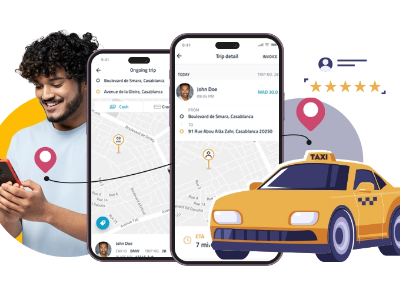
In the realm of education, the integration of video content has become increasingly prevalent, offering educators and learners a dynamic tool for enhancing engagement, comprehension, and retention. However, the impact of video editing on educational outcomes goes beyond the mere use of videos; it delves into the effectiveness of how these videos are crafted, edited, and presented. This article delves into the critical role of video editing in educational settings, exploring how measuring success in video editing can be tied directly to improved educational outcomes
Understanding the Role of Video Editing in Education:
Video editing in education encompasses a range of activities, from structuring content to enhancing visual appeal, adding interactivity, and ensuring accessibility. Effective video editing can transform raw footage into engaging, informative, and pedagogically sound learning experiences. It involves not only technical proficiency but also instructional design principles, creativity, and a deep understanding of learners’ needs and preferences.
Key Components of Effective Video Editing:
- Structuring Content:
- Organizing video content into logical sequences, chapters, or modules to facilitate learning progression.
- Using storytelling techniques, narrative arcs, and visual cues to engage learners and maintain their interest throughout the video.
- Visual Appeal:
- Incorporating high-quality visuals, graphics, animations, and effects to enhance comprehension and reinforce key concepts.
- Ensuring visual consistency, clarity, and aesthetics to create a professional and engaging viewing experience.
- Interactivity:
- Integrating interactive elements such as quizzes, polls, annotations, clickable links, and branching scenarios to promote active learning and participation.
- Providing opportunities for learner engagement, reflection, and feedback within the video content.
- Accessibility:
- Implementing accessibility features such as closed captions, transcripts, audio descriptions, and screen reader compatibility to ensure inclusivity and accommodate diverse learners.
- Adhering to accessibility standards and guidelines to make educational videos accessible to all learners, including those with disabilities.
- Engagement Strategies:
- Using engaging storytelling, real-world examples, case studies, simulations, and demonstrations to captivate learners’ attention and facilitate deeper understanding.
- Incorporating gamification elements, challenges, and rewards to motivate learners and foster a positive learning experience.
Measuring Success in Video Editing:
- Learning Objectives Alignment:
- Evaluate how well video editing aligns with learning objectives, instructional goals, and curriculum standards.
- Assess the effectiveness of video editing in meeting learning outcomes, knowledge retention, and skill development.
- Engagement Metrics:
- Analyze engagement metrics such as video view counts, watch time, click-through rates, and user interactions to gauge audience engagement and interest.
- Monitor learner engagement patterns, drop-off points, and attention spans to identify areas for improvement and optimization.
- Learning Analytics:
- Utilize learning analytics data, assessment results, and performance indicators to measure the impact of video editing on learning outcomes.
- Track learners’ progress, quiz scores, knowledge gains, and application of concepts to assess the effectiveness of video-enhanced learning experiences.
- Feedback and Surveys:
- Gather feedback from learners, educators, and stakeholders through surveys, feedback forms, focus groups, and interviews.
- Solicit input on video content relevance, clarity, effectiveness, accessibility, and overall impact on learning outcomes.
- Comparative Analysis:
- Conduct comparative analysis between different versions of video content, editing styles, or instructional approaches to identify best practices and areas for refinement.
- Compare the performance of video-enhanced learning experiences with traditional teaching methods to determine the added value of video editing.
Benefits of Effective Video Editing on Educational Outcomes:
- Improved Engagement and Retention:
- Engaging and visually appealing videos can capture learners’ attention, enhance motivation, and improve information retention.
- Well-edited videos with interactive elements encourage active participation, critical thinking, and knowledge application.
- Enhanced Understanding and Comprehension:
- Clear, concise, and well-structured video content can facilitate understanding of complex concepts, theories, and processes.
- Visual aids, animations, and demonstrations can clarify abstract ideas, promote conceptual understanding, and reinforce learning objectives.
- Personalized Learning Experiences:
- Customized video editing strategies, adaptive content delivery, and interactive features enable personalized learning experiences tailored to individual learner needs.
- Learners can control the pace, sequence, and depth of content exploration, leading to deeper engagement and mastery of content.
- Accessibility and Inclusivity:
- Accessibility features in video editing ensure that educational content is accessible to all learners, including those with disabilities or diverse learning needs.
- Inclusive design principles and universal design strategies promote equitable access to learning resources and foster a supportive learning environment.
- Data-Driven Decision-Making:
- Data analytics derived from video engagement metrics, learning assessments, and feedback enable data-driven decision-making and continuous improvement.
- Educators can use insights from video editing analytics to refine teaching strategies, optimize content delivery, and enhance learning outcomes over time.
Conclusion
The impact of video editing on educational outcomes extends far beyond aesthetics; it encompasses engagement, comprehension, accessibility, and personalized learning experiences. By measuring success in video editing through alignment with learning objectives, engagement metrics, learning analytics, feedback mechanisms, and comparative analysis, educators can gain valuable insights into the effectiveness of video-enhanced learning experiences. Effective video editing plays a pivotal role in creating immersive, impactful, and transformative educational content that empowers learners, fosters engagement, and drives positive learning outcomes.











